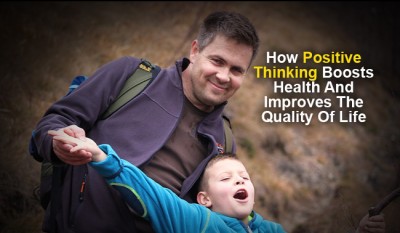
This post contains Amazon affiliate links, meaning I may earn a small commission if you purchase through my links, at no extra cost to you. Note: We aim to provide accurate product links, but some may occasionally expire or become unavailable. If this happens, please search directly on Amazon for the product or a suitable alternative.
Before we go into Fredrickson’s discovery, let me mention a couple of things. More and more research is coming out that is only serving as confirmation to many of what some people are saying, that our lives start becoming more meaningful and abundant with joy when we begin to balance 3 main things: Our body, mind, and spirit.
This is in part what explains why positive thinking has such positive effects on our life overall. I myself, a hardcore negative thinker turned more “positive” can serve as additional proof given that I myself lived through both polarities or sides of the spectrum. Keep advancing in understanding and you will begin to see the benefits.
One of these benefits is something very powerful many describe as “synchronicity.” Where you start to experience so many positive “coincidences” it becomes hard to dismiss them as such. They become more meaningful, and only show you how when you take responsibility for a more conscious living, you can begin creating instead of letting things happen to you.
We will get into the topic of synchronicity on another time, but I thought it was important to mention it as you begin to dig deeper into this positive stuff.
Now let’s get to the next part of Fredrickson’s research.
What Negative Thoughts Do to Your Brain
Play along with me for a moment.
Let’s say that you’re walking through the forest and suddenly a tiger steps onto the path ahead of you. When this happens, your brain registers a negative emotion — in this case, fear.
Researchers have long known that negative emotions program your brain to do a specific action. When that tiger crosses your path, for example, you run. The rest of the world doesn’t matter. You are focused entirely on the tiger, the fear it creates, and how you can get away from it.
In other words, negative emotions narrow your mind and focus your thoughts. At that same moment, you might have the option to climb a tree, pick up a leaf, or grab a stick — but your brain ignores all of those options because they seem irrelevant when a tiger is standing in front of you.
This is a useful instinct if you’re trying to save life and limb, but in our modern society we don’t have to worry about stumbling across tigers in the wilderness. The problem is that your brain is still programmed to respond to negative emotions in the same way — by shutting off the outside world and limiting the options you see around you.
For example, when you’re in a fight with someone, your anger and emotion might consume you to the point where you can’t think about anything else. Or, when you are stressed out about everything you have to get done today, you may find it hard to actual start anything because you’re paralyzed by how long your to–do list has become. Or, if you feel bad about not exercising or not eating healthy, all you think about is how little willpower you have, how you’re lazy, and how you don’t have any motivation.
In each case, your brain closes off from the outside world and focuses on the negative emotions of fear, anger, and stress — just like it did with the tiger. Negative emotions prevent your brain from seeing the other options and choices that surround you. It’s your survival instinct.
Now, let’s compare this to what positive emotions do to your brain. This is where Barbara Fredrickson returns to the story.
What Positive Thoughts Do to Your Brain
Fredrickson tested the impact of positive emotions on the brain by setting up a little experiment. During this experiment, she divided her research subjects into 5 groups and showed each group different film clips.
The first two groups were shown clips that created positive emotions. Group 1 saw images that created feelings of joy. Group 2 saw images that created feelings of contentment.
Group 3 was the control group. They saw images that were neutral and produced no significant emotion.
The last two groups were shown clips that created negative emotions. Group 4 saw images that created feelings of fear. Group 5 saw images that created feelings of anger.
Afterward, each participant was asked to imagine themselves in a situation where similar feelings would arise and to write down what they would do. Each participant was handed a piece of paper with 20 blank lines that started with the phrase, “I would like to…”
Participants who saw images of fear and anger wrote down the fewest responses. Meanwhile, the participants who saw images of joy and contentment, wrote down a significantly higher number of actions that they would take, even when compared to the neutral group.
Read the rest of this article source at How Positive Thinking Builds Your Skills, Boost Your Health, and Improves Your Work
Learn how I was able to overcome negativity and started experiencing much of the benefits mentioned in the previous article.






